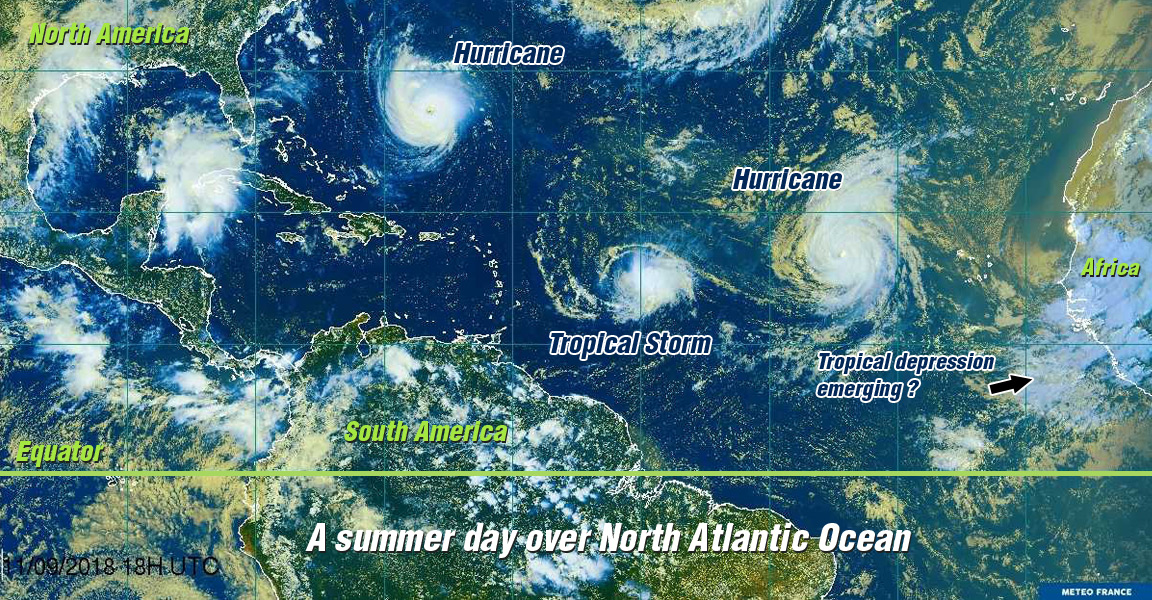
The chaotic system of Hurricanes
The amount of solar energy reaching the earth is not evenly distributed on the earth’s surface. Therefore, imbalances appear which force water and air in the atmosphere to move. The rise in temperature of the tropical sea surface is the main cause of atmospheric events that occur during the hot season.
Nature uses the laws of thermodynamics to create these weather phenomena.
When temperature differences become too great, the system created over the ocean can enter a chaotic regime out of which new harmful structures emerge:
These structures are hurricanes.
Sadi Carnot’s founding text of thermodynamics
“Every one knows that heat can produce motion. That is possesses vast motive-power no one can doubt, in these days when the steam-engine is everywhere so well known.
To heat also are due the vast movements which take place on the earth. It causes the agitations of the atmosphere, the ascension of clouds, the fall of rain and of meteors, the currents of water which channel the surface of the globe, and of which man has thus far employed but a small portion. Even earthquakes and volcanic eruptions are the result of heat. “
Nicolas Sadi Carnot, Reflections on the Motive Power of Heat,… (1824)
Henri Poincaré : a precursor of chaos theory
“A very small cause which escapes our notice determines a considerable effect that we cannot fail to see, and then we say that the effect is due to chance…, it may happen that small differences in the initial conditions produce very great ones in the final phenomena A small error in the former will produce an enormous error in the latter. Prediction becomes impossible, and we have the fortuitous phenomenon.”
Henri Poincaré, The Calculus of Probabilities (1912)
This sensitivity to the initial conditions is the signature of chaos. But for lack of computers capable of millions of operations, Poincaré could not go any further.
Edward Lorenz, the father of chaos theory and the butterfly effect
The meteorologist Edward Lorenz highlighted, in the early 1960s with the advent of computers, that two states differing by imperceptible amounts may eventually evolve into two considerably different states.
In an academic article entitled “Predictability: Does the Flap of a Butterfly’s Wings in Brazil Set Off a Tornado in Texas?”, he showed that small causes may have large effects in general and in weather specifically as earlier recognized by Poincaré.
He demonstrated that deterministic systems could not accurately predict the weather for more than two or three weeks. His work led to chaos theory.


